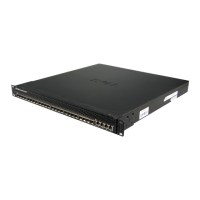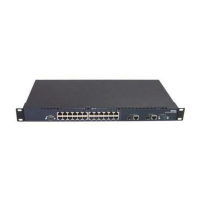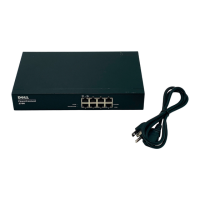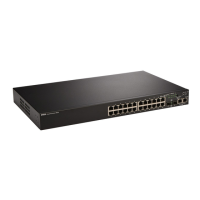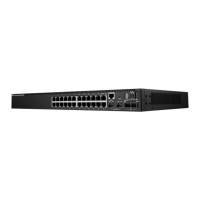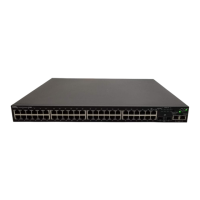PowerConnect B-Series FCX Configuration Guide 1041
53-1002266-01
Filtering
30
The <regular-expression> parameter specifies a regular expression for matching on community
names. For information about regular expression syntax, refer to “Using regular expressions” on
page 1036. You can specify a regular expression only in an extended community ACL.
Defining IP prefix lists
An IP prefix list specifies a list of networks. When you apply an IP prefix list to a neighbor, the Layer
3 Switch sends or receives only a route whose destination is in the IP prefix list. You can configure
up to 100 prefix lists. The software interprets the prefix lists in order, beginning with the lowest
sequence number.
To configure an IP prefix list and apply it to a neighbor, enter commands such as the following.
PowerConnect(config)#ip prefix-list Routesfor20 permit 20.20.0.0/24
PowerConnect(config)#router bgp
PowerConnect(config-bgp-router)#neighbor 10.10.10.1 prefix-list Routesfor20 out
These commands configure an IP prefix list named Routesfor20, which permits routes to network
20.20.0.0/24. The neighbor command configures the Layer 3 Switch to use IP prefix list
Routesfor20 to determine which routes to send to neighbor 10.10.10.1. The Layer 3 Switch sends
routes that go to 20.20.x.x to neighbor 10.10.10.1 because the IP prefix list explicitly permits these
routes to be sent to the neighbor.
Syntax: ip prefix-list <name> [seq <seq-value>] [description <string>] deny | permit
<network-addr>/<mask-bits> [ge <ge-value>] [le <le-value>]
The <name> parameter specifies the prefix list name. You use this name when applying the prefix
list to a neighbor.
The description <string> parameter is a text string describing the prefix list.
The seq <seq-value> parameter is optional and specifies the IP prefix list sequence number. You
can configure up to 100 prefix list entries. If you do not specify a sequence number, the software
numbers them in increments of 5, beginning with prefix list entry 5. The software interprets the
prefix list entries in numerical order, beginning with the lowest sequence number.
The deny | permit parameter specifies the action the software takes if a neighbor route is in this
prefix list.
The prefix-list matches only on this network unless you use the ge <ge-value> or le <le-value>
parameters. (See below.)
The <network-addr>/<mask-bits> parameter specifies the network number and the number of bits
in the network mask.
You can specify a range of prefix length for prefixes that are more specific than
<network-addr>/<mask-bits>.
• If you specify only ge <ge-value>, then the mask-length range is from <ge-value> to 32.
• If you specify only le <le-value>, then the mask-length range is from length to <le-value>.
The <ge-value> or <le-value> you specify must meet the following condition.
length < ge-value <= le-value <= 32
If you do not specify ge <ge-value> or le <le-value>, the prefix list matches only on the exact
network prefix you specify with the <network-addr>/<mask-bits> parameter.
For the syntax of the neighbor command shown in the example above, refer to “Adding BGP4
neighbors” on page 993.
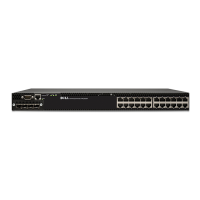
